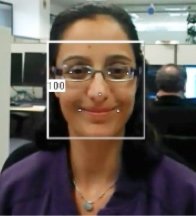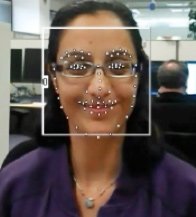Intel RealSense: What you have to know about the human-computer interaction technology!
You may know it as ‘Perceptual Computing’ but you now have to call it RealSense! The name is not the only thing that changes in Intel’s human-computer interaction technology. 2014 marks a new turning point for Intel with the introduction of its RealSense 3D camera, which allows developers to interpret depth, maximize the points of recognition to finally obtain the quality and accurate human-computer interactions.
For example and to begin this article with something fun, have a glimpse at this cool game using Intel® RealSense™ technology:
https://www.youtube.com/watch?v=DYzOSCX6gp0
Feeling excited? Intel has just announced a $1 Million RealSense App Challenge where participants will have to first submit their ideas and if they are selected, will be able to develop their apps with 3D cameras and an SDK provided by Intel. But we’ll get to that later…
Since the 3D camera of Intel is one of the key elements of RealSense, let’s focus on its features. Equipped with a 1080p RGB sensor, plus an infrared laser and infrared sensor, Intel tells us on their website that the camera is optimized for close range interactivity and that the hand and finger tracking capability works from 0.2 to 1.2 meters. These 3D cameras will now be integrated into most of the Ultrabooks, Notebooks, 2-in-1s, and all-in-ones, a proof that human-computer interaction is now part of the game. It also comes with a dedicated SDK. The good news is that you don’t need to be an expert to implement gesture into your application, according to Intel. So let’s see what the kit offers and the capabilities it supports. Firstly, we can segment it into 6 categories that deal with most of the interaction that a human can propose: hands, face, speech and the environment.
Hand and Finger Tracking: The RealSense SDK can track up to 22 joints in each hand enabling the user to achieve an accurate hand and finger tracking.
Face Analysis: This new SDK can identify up to 78 points on the face (the previous SDK supported only 7). Not only can it track your face and head but it can also infer emotions and sentiments. Check this video to see for yourself.
Gesture: RealSense offers complete gesture recognition with 8 static poses like thumbs up and 6 dynamic gestures like a wave. You’ll have to think in 3D from now on. Check it out in this demo.
https://www.youtube.com/watch?v=iL3XutiK4nk
Speech Recognition: The kit provides a powerful speech recognition enabling the user to command, control and dictate. Enough to imagine some really cool apps using hands-free interfaces!
3D Augmented Reality: The SDK offers some interesting capabilities such as a precise augmented reality or the possibility for the user to remove the background.
3D Scanning and Printing: It will bring object scanning, editing, and printing to software developers. Let’s see if it inspires them for the Challenge!
You just have to look at some of the experimentations already made and available online to realize that this 3D camera also fosters a massive opportunity when associated with other devices. For example, Thomas Endres and Martin Förtsch from The ParrotsOnJava team published recently on Youtube an example of Intel RealSense with a Thymio II robot. In this video (see below), we can observe the great responsiveness of the robot and how natural it is for the user to control it.
According to Intel, it’s the combination of this 3D camera and the dedicated development kit that makes RealSense so interesting for developers. If you want to see by yourself the wonders of this SDK, you’ll have to wait a couple of weeks as it won’t be available until after October 1st. Until then, free your imagination and submit your own idea of perceptual computing on the Intel’s challenge platform. “Let’s dream first, we’ll see about the technical aspects later” is the motto. Plus, if you’re idea is selected, you’ll receive the development kit for free on the official release date! Feeling uninspired? The recent news gave us some clues. For example, the celebrity nude pictures shared all over the Internet these last few weeks were quite a scandal. The Face identification system included in the SDK might be a solution to secure someone’s account. Developers, these careless celebrities need you!
For those who can’t wait any longer and want to have a glimpse at the SDK, check out this webinar available on Youtube on how to create natural user interface with the RealSense beta SDK 2014.
https://www.youtube.com/watch?v=da1B4h7DuiU
It’s now time to bring human-computer interactions to a whole new level. In the past, developers were often a bit frustrated by the limited capabilities proposed by the gesture recognition technologies. They were unfortunately below our expectations. What Intel proposes with RealSense is just a working base. Let’s assume that it is why they provided a feature-rich SDK for developers. They count on their inventiveness to develop and design apps that will revolutionize the human-computer interaction.
The Challenge that they launch seems to give a lot of space to creativity. Indeed, they start with an Ideation phase in which participants have at first to submit their ideas. They can do it here. There are so many possibilities with such a technology that Intel has decided to divide the Challenge into different Innovation categories: Gaming + Play, Learning Edutainment, Interact naturally, Collaboration/creation and open innovation. They symbolize all the things that we can do with a computer. Top scoring ideas will be invited into the track development phase (a total of 1300 ideas will be chosen during the 1st round). As said earlier in this article, every contestant will be loaned the Intel 3D Camera and its SDK as part of the development process.
The Pioneer track deadline for the 1st round is October 1st, 2014 (and September 19th for the Ambassador track). Check out the official Challenge page to get more information on the 2 tracks proposed. October 1st is coming around really quickly so hurry up and don’t miss out on this awesome opportunity!






